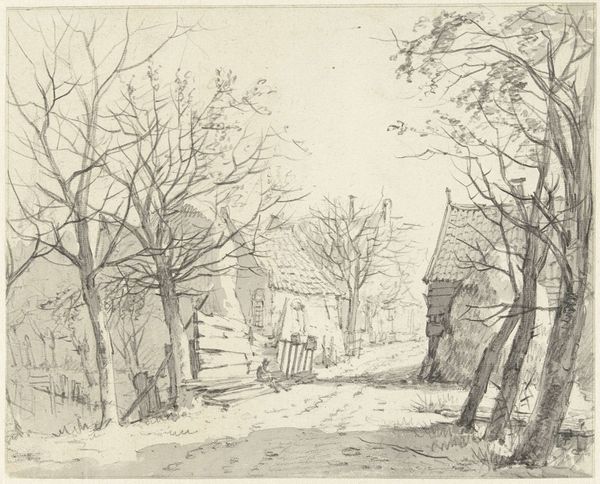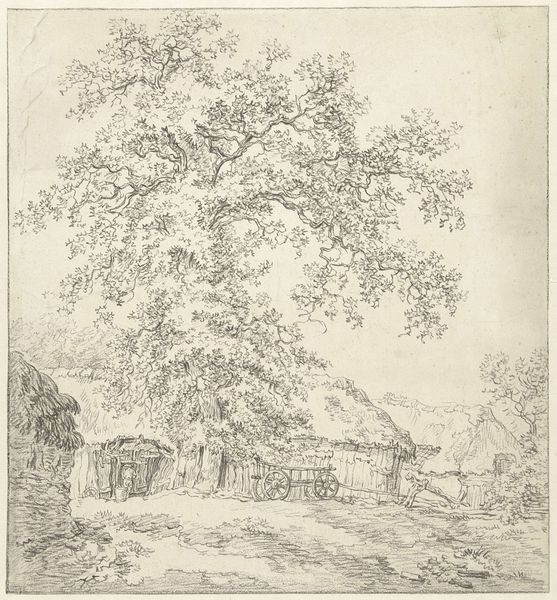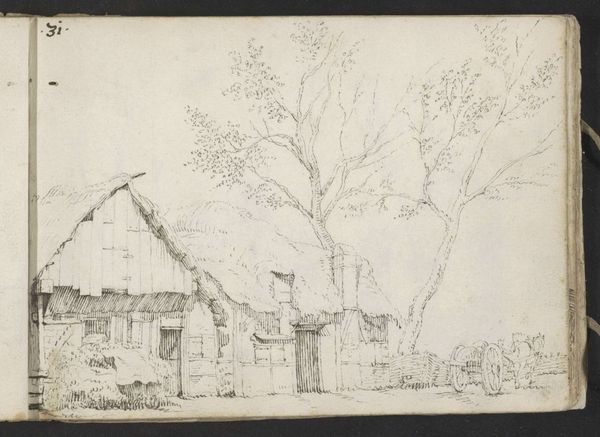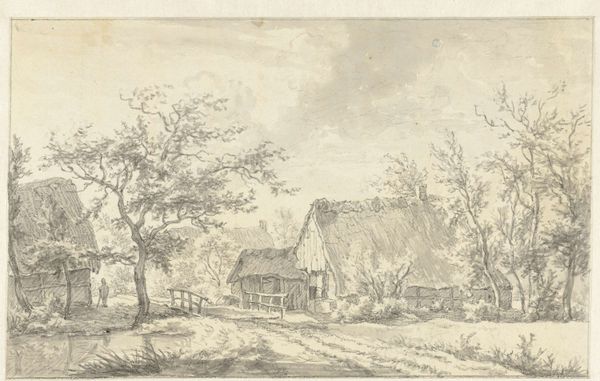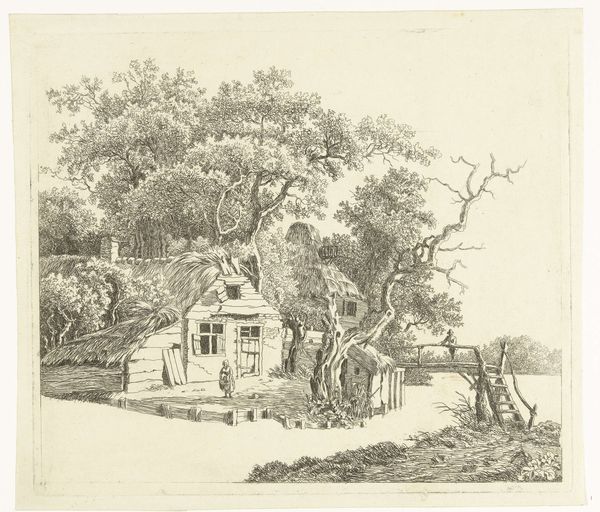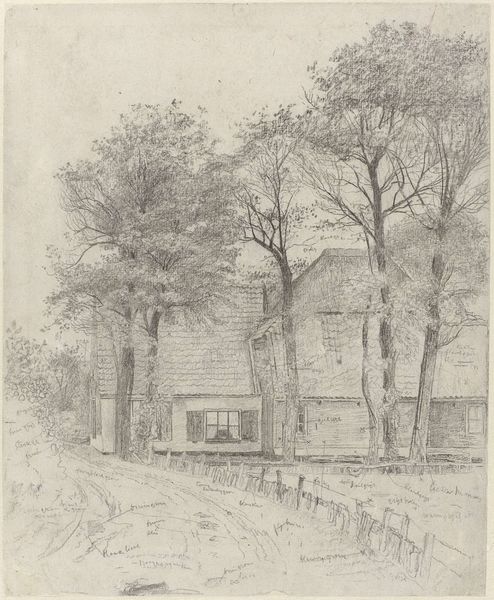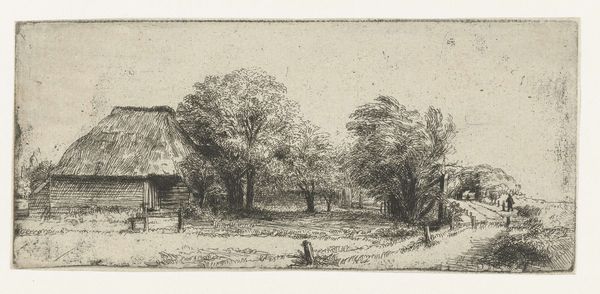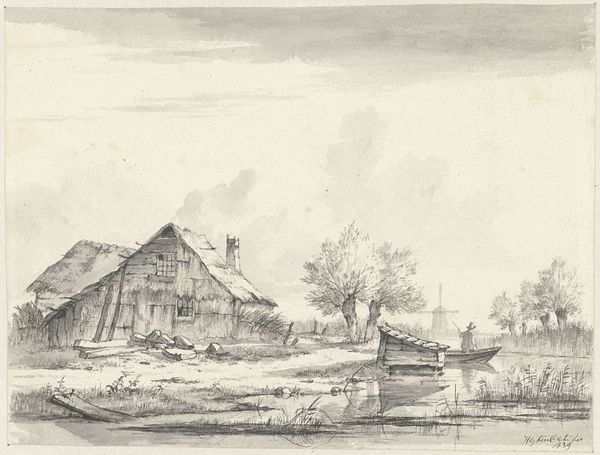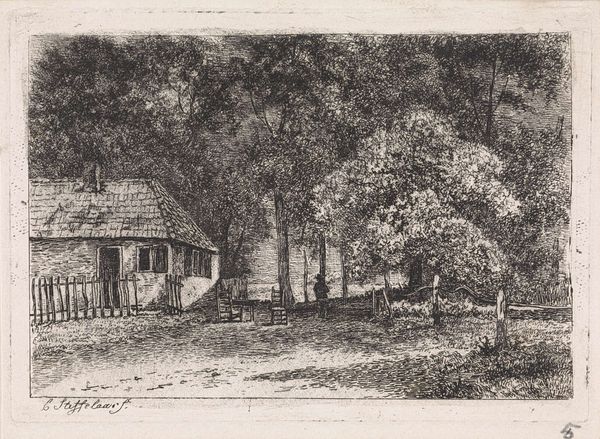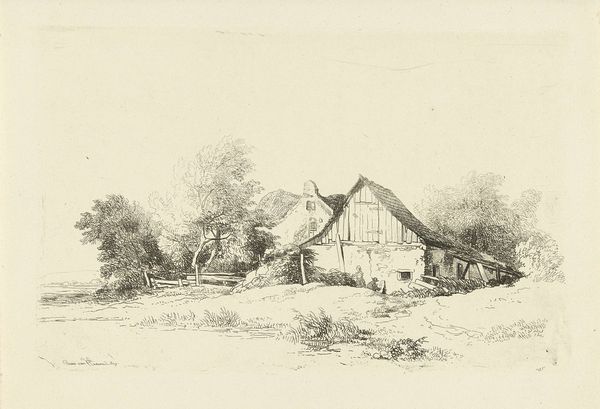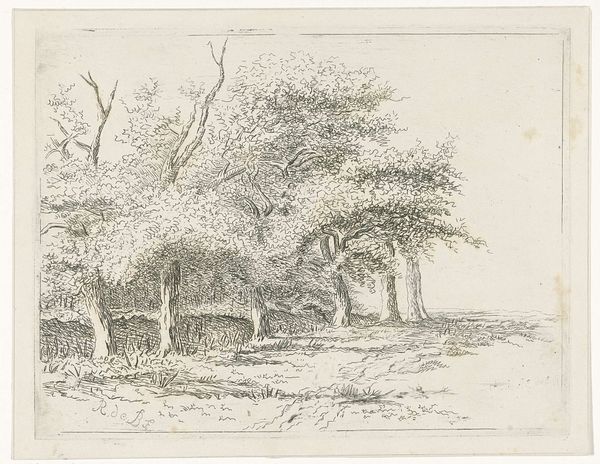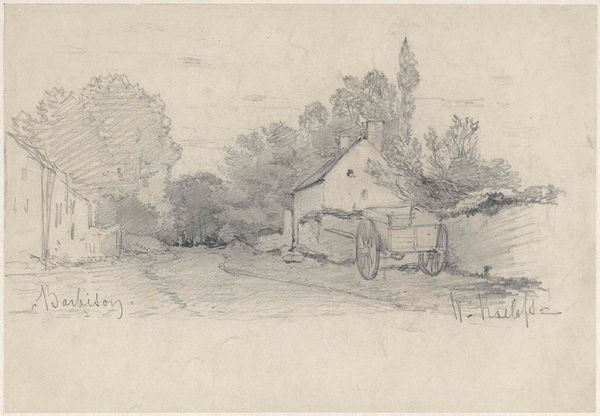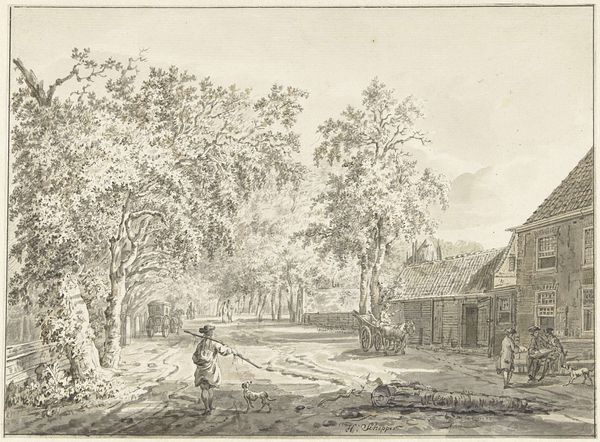
drawing, paper, pencil
#
drawing
#
landscape
#
etching
#
paper
#
pencil
#
realism
Dimensions: height 257 mm, width 376 mm
Copyright: Rijks Museum: Open Domain
Editor: This drawing, titled "Boerderij aan een zandweg" – which translates to "Farmhouse on a Sandy Road" – is attributed to Adrianus de Visser and thought to have been created sometime between 1772 and 1837. It’s a pencil drawing on paper that feels incredibly serene and grounded. What catches your eye, and how do you interpret this work? Curator: It’s a quintessential example of Dutch landscape drawing, isn't it? What I find fascinating is how it engages with the emerging ideals of the picturesque during that period. The careful depiction of the rural scene and the humble farmhouse, seemingly untouched by modernization, speaks volumes about the cultural value placed on agrarian life. Editor: I see that, like a celebration of simplicity perhaps? Do you think there's also a socio-political dimension? Curator: Absolutely. Consider the social context: industrialization was starting to alter the landscape, leading to anxieties about lost traditions. This drawing romanticizes rural life, possibly as a critique of rapid change, reminding viewers of a perceived simpler past. Think about the role of art institutions – where and how would this image be displayed? For whom? It would undoubtedly appeal to an urban, educated audience nostalgic for the countryside. Editor: That makes me think about how it's now displayed in a museum context. Is it displayed in the same way as initially envisioned? Curator: Highly doubtful. Today, it's seen perhaps as an aesthetic object or a historical document. Back then, its function might have been tied more directly to shaping ideas about national identity or social values. Does it change your understanding to consider these aspects? Editor: Definitely! Seeing it as part of a larger conversation about societal changes and the construction of national identity adds so many layers. Thanks for sharing that perspective! Curator: My pleasure. It’s in these layers that we can really grasp the impact and purpose of art through time.
Comments
No comments
Be the first to comment and join the conversation on the ultimate creative platform.
